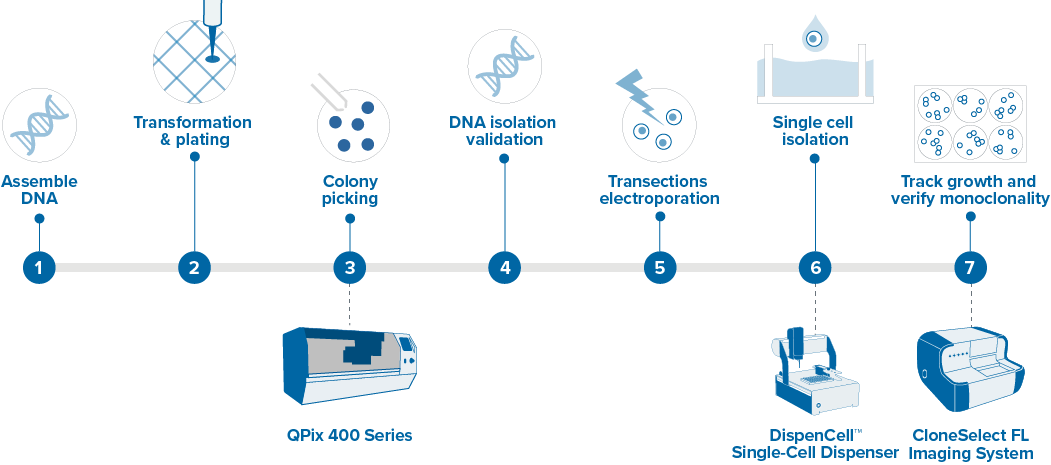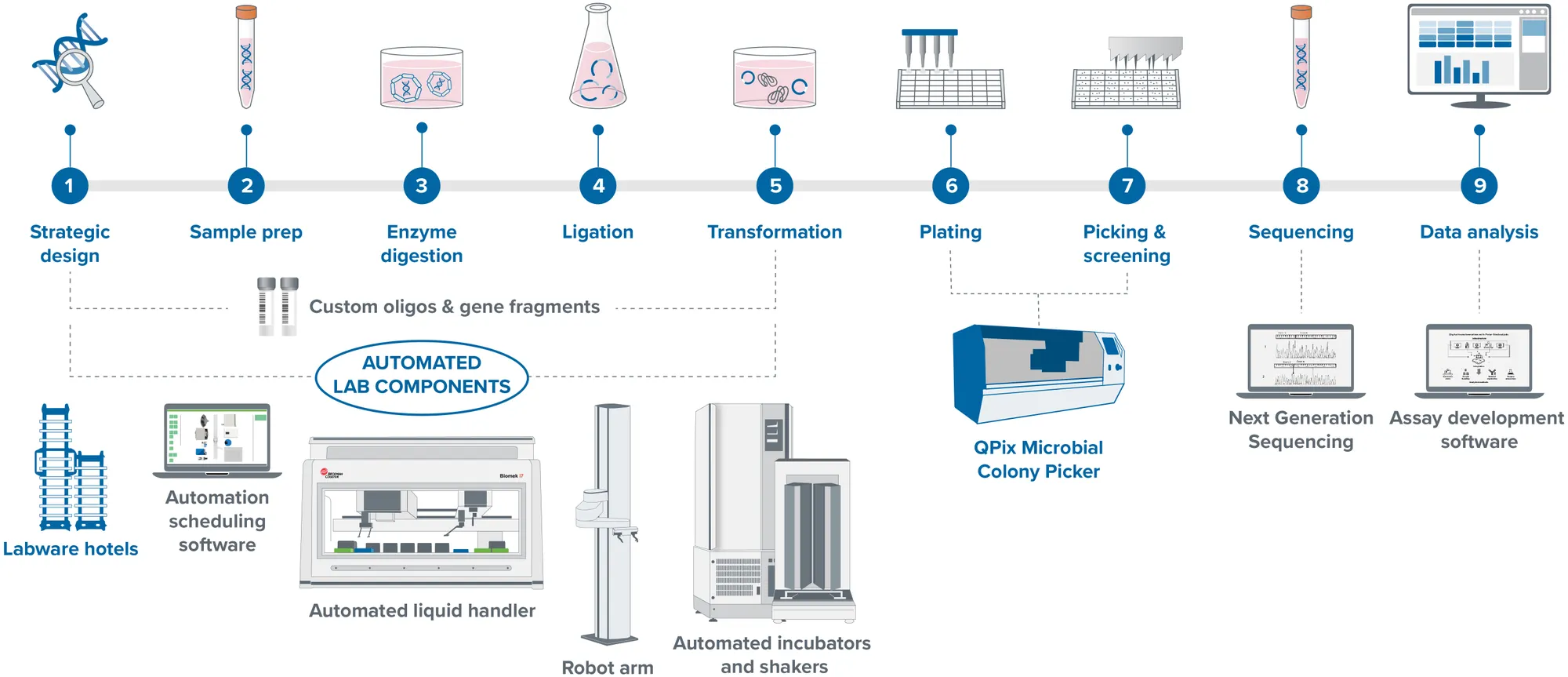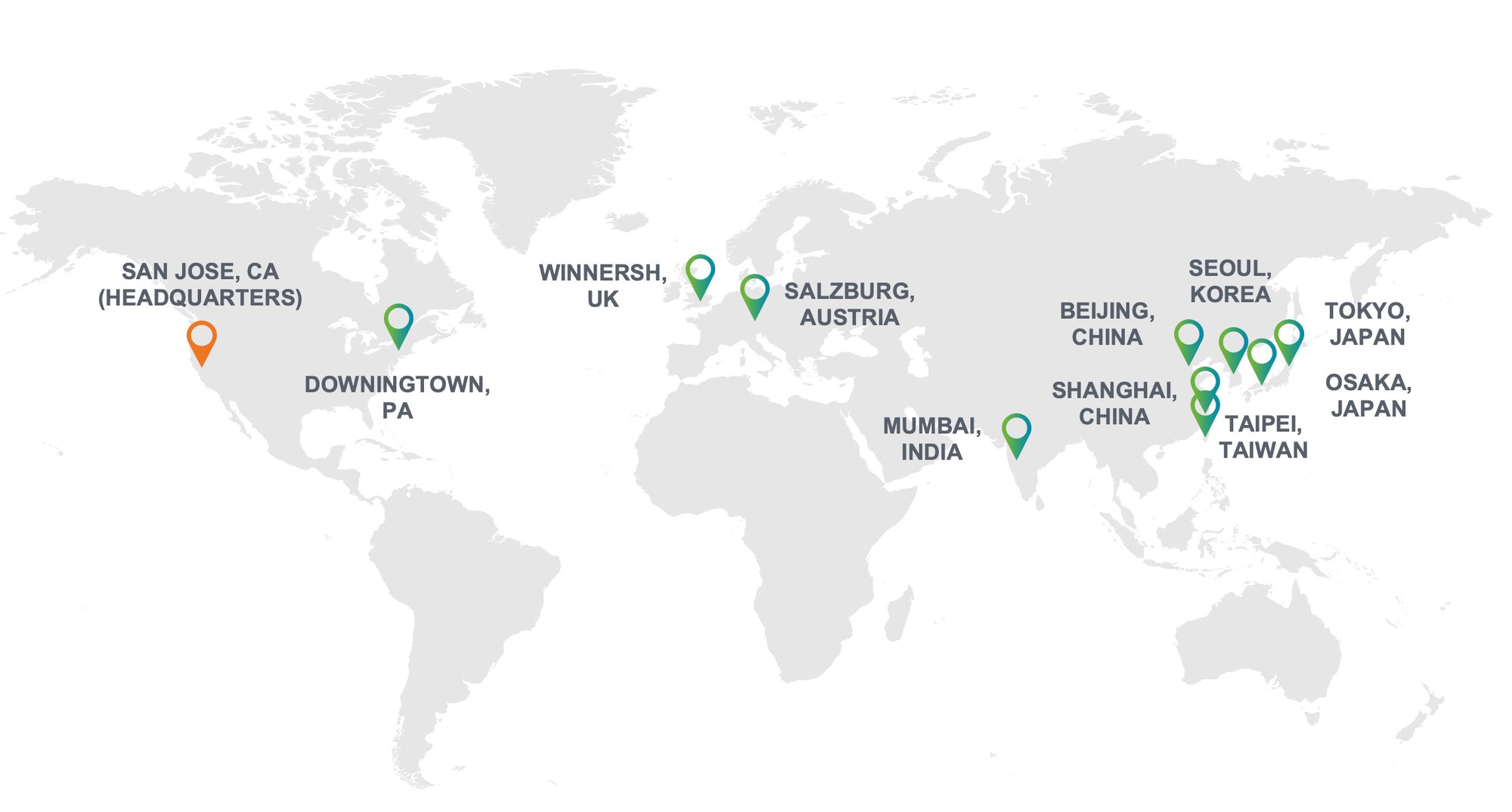SMALL FOOTPRINT. BIG IMPACT.
Ideal for small lab spaces with no compromise on efficiency, QPix XE has advanced imagining and robotic capabilities and allows for further integration into an automated work cell for throughput growth or walkaway time.
Ideal for small lab spaces with no compromise on efficiency, QPix XE has advanced imagining and robotic capabilities and allows for further integration into an automated work cell for throughput growth or walkaway time.

Designed for smaller lab environments without compromising performance, the QPix® XE Microbial Colony Picker delivers high-throughput accuracy in a compact, automation-ready footprint. With image-based selection, flexible colony screening options, and intuitive software, QPix XE supports microbial workflows such as plasmid preparation, synthetic biology, and library screening.
Engineered for modular scalability, QPix XE can grow with your lab, supporting integration into automated workcells for increased throughput and walk-away efficiency. Compact, reliable, and easy to use, it’s the smarter choice for labs focused on reproducibility, traceability, and streamlined colony selection.
Achieve high-precision colony picking—up to 1,500 colonies per hour—without sacrificing valuable bench space.
The modular design supports integration into automation workflows as your throughput needs grow.
Image-based screening and intelligent software guide accurate selection based on size, shape, proximity, and fluorescence.
Automated microbial colony picking systems, like the QPix XE, offer the unique option to simultaneously detect colonies and quantify fluorescent markers in a pre-screening step before picking.
Pick colonies accurately and efficiently using organism-specific pins that maximize material transfer and avoid cross-contamination with a reliable pin sterilization process.
And what's more, you're able to support a range of uses such as high-throughput cloning, library screening, strain engineering, and CRISPR editing.
Industrial applications from biotech to synthetic biology are using phage display because of its high throughput capabilities for protein interaction determination and protein engineering. However, in order to select high-affinity binders, or ligands, which can recognize a naive target from a phage library (~107 - 1012), non-binding bacteriophages need to be washed away, and phages that bind specifically with target molecules are eluted and harvested through 3–5 rounds of panning. Using conventional methods, this can be laborious to perform when screening multiple selections with different antigens simultaneously. To speed up their screening, scientists are incorporating new technologies like the QPix™systems into their workflow to speed up their phage display antibody screening.
Molecular cloning is the assembly of DNA into a vector, leveraging E. coli as a host organism to produce plasmids. Using the QPix XE to automate the laborious process of plating and streaking and colony picking frees scientists to analyze data, not perform repetitive, time-consuming tasks. Increase throughput and speed while increasing accuracy with a complete audit trail and sample tracking.
For the synthetic biologist, biological building blocks are often generated from bacteria. The design-build-test process is utilized in order to engineer these building blocks. This often requires screening and picking colonies of interest.
Traditionally, colony picking is performed manually, using sterile pipette tips, toothpicks, or inoculation loops, which is a slow, labor-intensive, and time-consuming process. Synthetic biology research can, therefore, benefit greatly from the flexibility and throughput of automated colony pickers. Not only will the QPix XE make the entire process quicker (picking up to 1,500 clones per hour), but the results are more consistent and reliable, increasing the quality of the data produced.

The QPix XE from Molecular Devices plays a pivotal role in the plasmid production workflow, particularly in optimizing plating and screening processes. Through its advanced automation, transformed cells are meticulously placed on selective media using the QPix XE, which is a crucial step in promoting the growth of recombinant colonies. This targeted placement ensures that only colonies with the desired genetic modifications flourish, effectively minimizing background noise from non-transformed cells. Additionally, the device's sophisticated imaging and analysis software come into play during the screening phase, adeptly identifying and selecting those bacterial colonies that contain the targeted plasmid. This precision reduces false positives, streamlining subsequent plasmid isolation and verification. By facilitating accurate cell placement and efficient screening, the QPix XE establishes a strong foundation for a streamlined and effective plasmid production workflow.





*Price, time to deliver, and specifications will vary based on mutually agreed technical requirements. Solution requirements may cause adjustment to standard performance. Custom solutions are subject to Molecular Devices Custom Products Purchase Terms available at https://www.moleculardevices.com/custom-products-purchase-terms.
